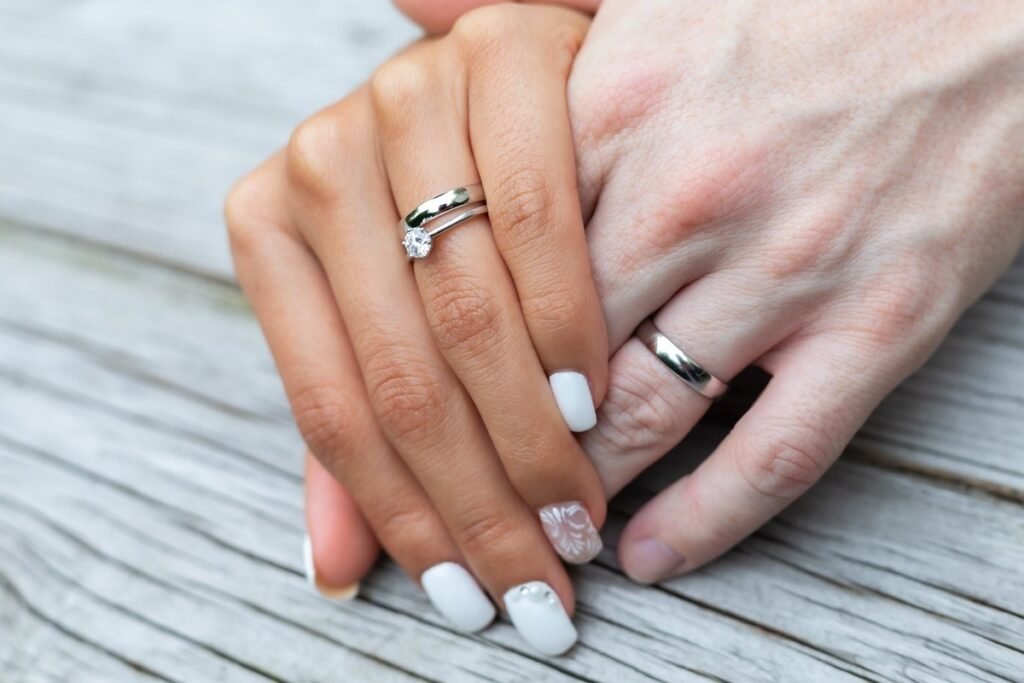When you flash that diamond ring, most people tend to notice the rock on that ring. This is why a lot of people tend to get caught up in the carat, size, and even shape of the diamond as if it is the only criteria that gives the ring worth.
In reality, diamond settings can make a world of difference between two diamonds of the same carat weight. It’s good to understand the effects of a ring’s setting on the brilliance of your bling.
The Basic Setting Styles
If you have ever asked “What are the different kinds of ring settings?” then be prepared to choose from a whole array of styles. Having an engagement ring personally made just became a lot more interesting if you get to choose from any of these setting designs.
Prong setting
If there was the most basic of basic settings, it would have to be the prong style setting. Engaged couples prefer this style for the ring because it grasps a singular stone, which is perfect for the most common styles of engagement rings. As the name suggests, this setting style holds the diamond in a claw-like setup.
A prong setting can have as many as six prongs in design, depending on the shape of the diamond. Uniquely-cut diamonds may have a unique shape of prongs to ensure that the angles are protected and the stone is secure.
This setting highlights the diamond as the center of the ring, and makes it rise above quite literally. Even if the band is peppered with smaller stones, the raised center stone will get all the attention.
Bezel setting
Of all the diamond setting types, this may be the most secure in as far as the diamond never leaving your ring. Jewelers work to ensure that the metal contours with the shape of the diamond. Adding to that, the fact that the top of the stone sits on the perimeter of the setting.
This can also be quite an elaborate setting for an engagement ring. Bezels usually have either all four sides of the stone covered with smaller stones or just two bezels on the sides on top of the band, to create more designs and looks.
What makes this attractive, especially for women who are active in their day-to-day lives, is that the bezel setting does not snag as easily as other types. Because the setting puts the diamond more securely within its setting, one feels less anxious about the stone falling off. However because the bezel does not let light into the diamond as much as prong or halo does, then it might make the diamond less visible and less bright overall.
Tiffany setting
Taking the name of the famed jewelry brand, the Tiffany setting makes use of a six-prong setting that aims to maximize the light that shines through the diamond.
However, despite the elegance of what is the simplest but most elegant prong diamond setting style, its biggest issue is wear and tear. Tiffany setting easily snags on clothing, because it works better with a higher setting.
The setting style is essentially trademarked, but it can be redone by a skilled jeweler. Just make sure you have a trusted jeweler that you can tap every two years for prong inspection.
Collet setting
If you have ever asked yourself, “How do you make a collet setting?” then it might surprise you to know that it can manifest in different looks. A collet setting secures a stone with a raised cornerstone. It mimics a prong style where the stone can be surrounded by prongs that hold it in place, but there is also a crown-like setting to hold the stone in place.
You can choose to personalize the collet style by choosing the number of prongs. It’s best to consult with your jeweler on the kind of collet setting that will match your stone’s shape.
Pavé setting
If you have ever wondered what a sophisticated diamond setting will be like, look no further than the pave setting. Among the other diamond settings, this style takes its name from the literal paving of diamonds on the surface of a band.
It’s hard to miss a pavé setting’s sparkle because it surrounds the entire ring. This style works best if you have a darker, vivid center stone, so that the whites of the smaller diamonds will make it pop out.
One downside to this setting type is the safety of the diamonds. Because the ring is surrounded by many smaller diamonds, there’s always the risk of diamonds falling out, especially when the owner wears it frequently. To avoid this risk, you need to tap a reputable jewelry maker.
Of course, it pays to be prepared when you ask “How much does it cost to mount a gemstone” using this setting. Setting a lot of smaller stones securely and in a beautiful design will take a lot more work and craftsmanship, hence, a higher price tag.
Channel setting
If you are looking for a unique diamond setting, especially for engagement rings, then this may be an easy bet. For one, there is no raised center stone for this style, unless you specifically order a major stone in the middle of the band of smaller stones.
The channel setting takes its name from the idea of a channel of water or river mirrored in a ring. Instead of the stones on the band being raised, there are two rows of metal that run parallel on the band, enclosing the diamonds.
This style is more often used with wedding bands, especially for those who do not want to settle for a plain metal band. The biggest downside here would be the cost. Between the number of brilliant stones used and the craftsmanship needed to ensure that none of these stones will fall off, you will need to get your most trusted jeweler to work on this project.
Tension setting
Perhaps the most unique and modern style of setting a diamond would be the tension setting. In a literal sense, the diamond is set in place using the tension of the band.
With the use of unique diamond setting tools and lasers, this style calibrates the dimensions of the diamond. Using tiny grooves on the edges of the band, the stone is set there by the pressure of the band that continually pushes the sides of the stone to keep it in place.
If you feel uneasy with this otherwise beautiful setting, jewelers can add bezel on the side or beneath the diamond so that it is firmly held in place. Because of the unique band design, this is not the kind of setting you’d want if you feel that you will be resizing the ring ever so often.
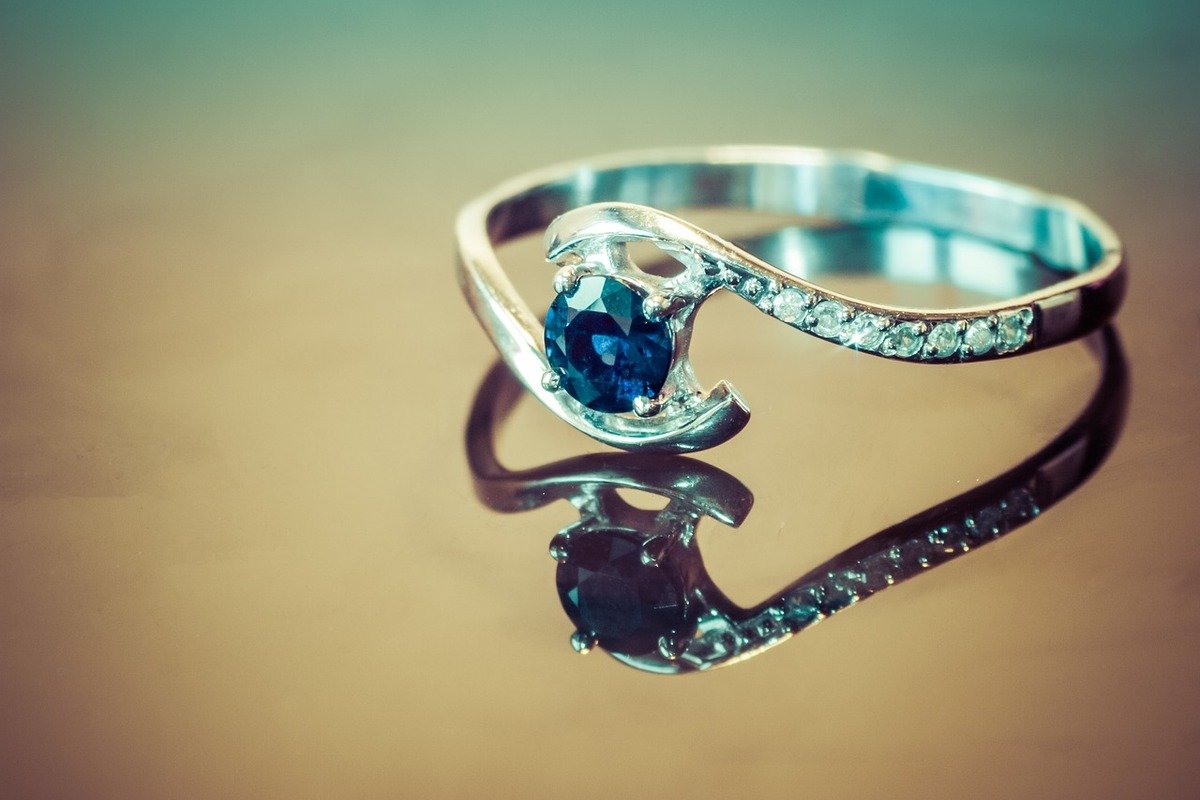
Cathedral setting
If you are working with a less bright or colorful stone, one way to go about it would be to emphasize the setting’s design. The cathedral setting puts a lot of emphasis on the setting as it mimics the arches and gilded patterns of a cathedral.
Essentially, the cathedral setting follows a prong or bezel style. But it is mounted higher than the rest and the setting itself features arches that cover the bottom side of the diamond.
Arches can make smaller diamonds look bigger because they are raised from the band. But more importantly, the arches give it an elegant appearance that allows the metal to work in sync with the stone. Just make sure your band is an elegant shade of gold or pewter for more drama.
Enhancing Diamonds With the Right Setting
With all of the setting styles, it can be harder to choose and commit to just one. However, any reputable jeweler who customizes rings will tell you that it’s also important to consider different factors that can affect the overall look of the ring. Setting matters, but you can also use setting as a way to enhance a diamond to look even better than its original worth.
Achieve richer colors
Some diamond settings have specific designs that can make the diamond look brighter. For instance, raised settings can allow more light into the diamond.
Even something as simple as having white prongs to hold a diamond, even on a yellow gold band can have a big difference in terms of diamond color. While gold can be reflected in the diamond’s facets, white prongs help lessen this reflection, making the diamond look whiter.
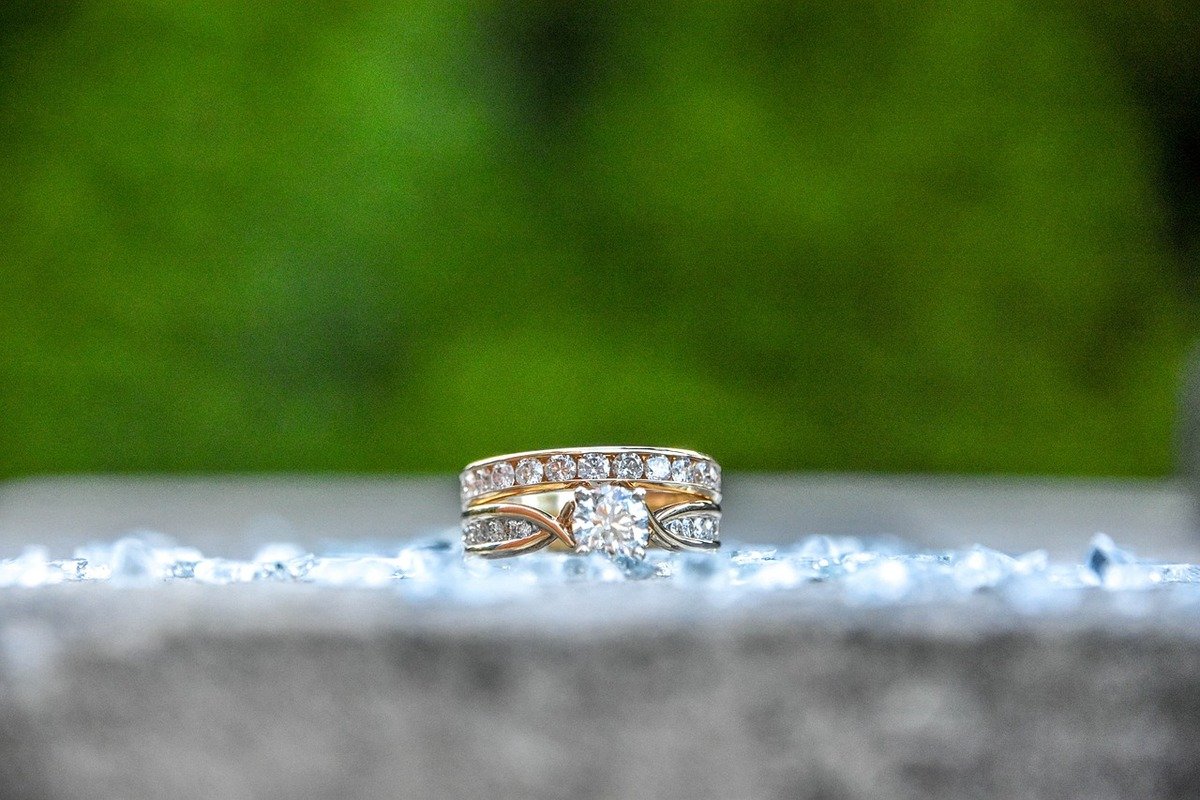
Illusion of bigness
Avoid tension setting and other setting styles that push the diamond down the band. With a tension setting ring, the bands are usually thicker to properly hold the stone in place. Even if your diamond would look marvelously big in a bezel setting, it may look smaller when cast between two thick shanks of a band.
A slimmer band will also give the illusion of a bigger stone. In addition, it can also make the ring more feminine and dainty, and make ornate bezels stand out.
The right color
The right color of metal can also make the stone stand out from the setting. For instance, cathedral settings can have a more antique and ornate look because carved gold gives the impression of well-made craftsmanship.
On the other hand, those who want a more modern look for their rings may want to go with a platinum band. Just note that with a platinum band’s hardness, there may be less room for intricate additions. Think modern equates to minimalist, especially when you are working with hard metals like rhodium, tungsten, and palladium.
Accents and Add-ons: To Do or Not to Do?
Working with the metals of an engagement or wedding ring may also be your next go-to step in making a ring look more spectacular. Some people tend to forget that the metal can become the very accent of the ring. These three add-ons may do the trick in enhancing the overall look of the stone.
Filigree
If your trusted jeweler is very adept at creating intricate metalwork, then you can add a filigree to your band. This is a style that taps metalwork to create decorative shapes and images on the band.
Usually, the filigree style looks like vines or scrolls that unfurl and curl on the stone. For those who prefer more modern shapes, this can also be done in an Art Deco design, as long as there is a sense of symmetry and harmony to the shapes. This works very well with silver metal, as it gives an otherwise silver shimmer a more brilliant form.
Engraving
Similar to filigree, engraving is more about carving onto the metal to form shapes and impressions on the band. This is a great alternative for those who do not want to have a channel style band with smaller diamonds.
Instead of diamonds, engraving creates grooves and designs on the band. This gives it texture, one that you can make your own by having your jeweler design a specific impression on the band.
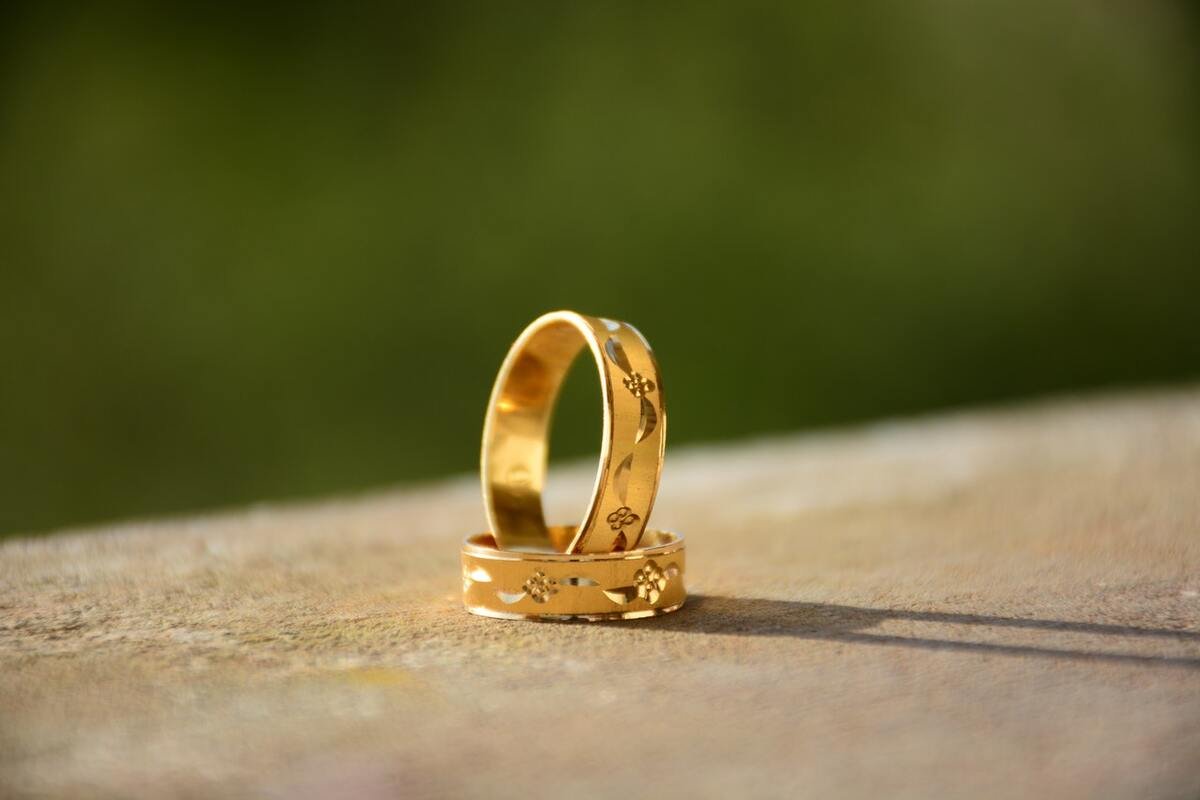
Milgrain
If you want to know how do you set jewels in metal to achieve an intricate look without adding more stones, then a milgrain detailing technique is a good approach. Milgrain adds tiny metal beads to create a border for the stone.
Usually, this add-on will require the addition of an intricate array of hand-carved metal beads onto the ring. This also gives the ring an antique quality, because of the intricate, almost lacework design.
Beyond Rings and Diamonds
Intricately set diamond-set rings may be well-matched by diamond stud earrings. These often fine pieces of jewelry have become even more popular in recent years because they add elegance to an outfit, especially for formal events.
Most earring settings for gemstones usually follow the ring counterparts. Bezel, prong, and pave settings are the most common and trusted diamond earring setting styles.
Matching rings and earrings: The formal event look
When attending formal events, a staple yet still elegant outfit is matching rings and earrings. You can achieve this look by choosing the same setting style for the two jewelry pieces.
Setting vivid gemstones
Some jewelry owners also prefer ring settings for gemstones and precious stones. While they follow similar setting styles for diamonds, it’s important to note that some metals tend to match specific stones.
For example, a sapphire stone may work better with white gold, platinum, or silver because white and cool silver sets off the vivid blue perfectly. Rose gold has been the favorite setting for rose quartz, mostly because the tones of the metal and stone are a match made in heaven.
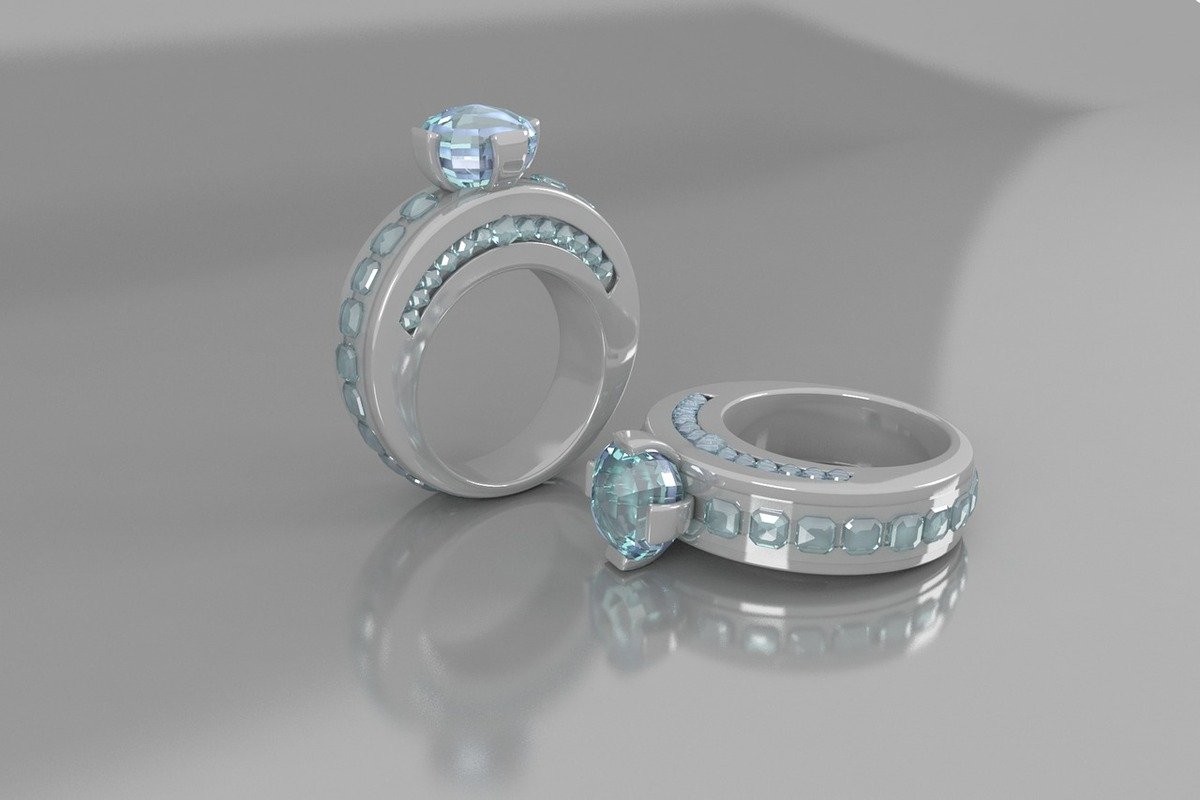
Note that some metals may be more durable than others. It’s important to combine this with the fact that some settings can be trickier to work with than others. For instance, harder metals will make it harder to do engravings or filigree on. Take this into consideration when you choose the combination of stone, metal, and add-on designs.
And that’s about it; remember that the different stone settings described here will work, depending on your preference. But do take note that the metal, design, and stone that use intend to use will also play a part in choosing the ideal setting.
Interested in learning more about jewelry engraving techniques and tips? Check out “Written in Stone: Tips for Proper Jewelry Engraving.”

